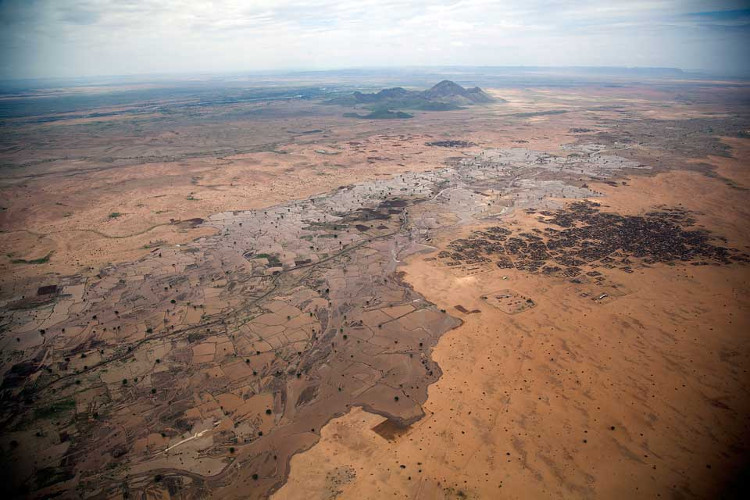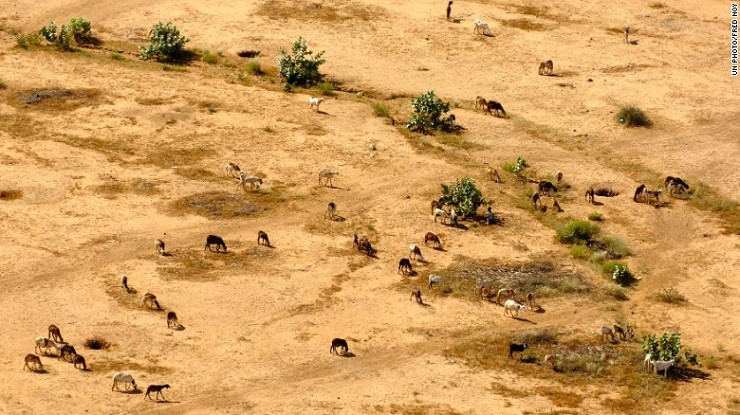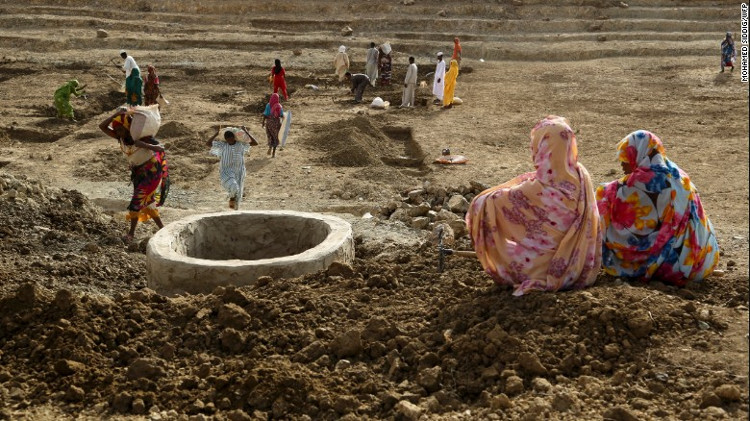The country is about to be
Due to the warmer climate and erratic rain, many places in this country are gradually no longer suitable for agriculture and villages.
The ecosystem and natural resources of Sudan, a country in North Africa, are degenerating, CNN reported.

Sudan can become a lifeless place because of climate change.
High temperatures, scarce water resources, arid soil and severe drought became common. After years of desertification, Sudan's biodiversity is threatened. Drought also hinders the fight against poverty here.
This burden will not only affect the food security, sustainable development of the country but also the habitat of many Sudanese families.

The ecosystem and natural resources of Sudan, a country in North Africa, are degenerating.
Dust storms also appear more in the region. Moving like a giant thick wall, it brought sand and dust, buried houses, increased the speed of water evaporation. As a result, water shortage and soil erosion are more severe.
Experts say that without timely intervention, part of Sudan will not be able to live due to climate change.
"North Africa is already hot and has a rapid increase in heat. In this century, there will be a time when part of North Africa will become unable to live," Jos Lelieveld, a climate scientist told CNN.

High temperatures, scarce water resources, arid soil and severe drought became common.
Due to the warmer climate and erratic rain, many places in Sudan are no longer suitable for agriculture and villages.
Unusual rain has destroyed crops. The country is also experiencing both droughts and floods, making farmland no longer suitable for cultivation. More than 600,000 people have also relocated due to flooding since 2013, according to the Domestic Migration Monitoring Center (IDMC).
Michelle Yonetani, a senior disaster adviser at IDMC, said 70% of Sudan's rural population depends on rain-fed agriculture. This is both a food supply and their livelihood. In addition, 80% of Sudan's population uses rainwater as a source of drinking water.

Dust storms are also more common in the area, making the water shortage and soil erosion more severe.
She told CNN that Sudan was faced with an "extremely complex emergency situation."
"The drought has further aggravated the desertification process, affecting the desert belt in the northern region. Therefore, these invasive deserts have replaced all villages."
According to a report by the United Nations Office on Coordination of Humanitarian Issues (OCHA), earlier this year, an estimated 1.9 million people around the world could be affected by reduced agriculture and livestock. farming due to the impact of El Nino weather phenomenon. 3.2 million people are expected to face water shortages, potentially "seriously reducing sanitation and personal hygiene".

More than 600,000 people also had to relocate due to flooding since 2013.

Experts say that without timely intervention, part of Sudan will not be able to live due to climate change.
- Mysterious and closed Central Asian country with the outside world
- Little known things about the most flat country in the world
- How many countries in the world?
- Visit the most civilized country in the world
- Occasionally men come to Japan from a non-existent country
- African countries must change their names to avoid mistaking for Switzerland
- Interesting surprises in the richest and most relaxed country in the world
- The most optimistic country in the world is in Asia
- Surprised with the beautiful set of Malaysian country images in Vietnam
- Australia - The happiest country in the world in 2014
- The first country in the world with no emissions
- Strange life in Africa's most mysterious country
 Is the magnetic North Pole shift dangerous to humanity?
Is the magnetic North Pole shift dangerous to humanity? Washington legalizes the recycling of human bodies into fertilizer
Washington legalizes the recycling of human bodies into fertilizer Lightning stone - the mysterious guest
Lightning stone - the mysterious guest Stunned by the mysterious sunset, strange appearance
Stunned by the mysterious sunset, strange appearance